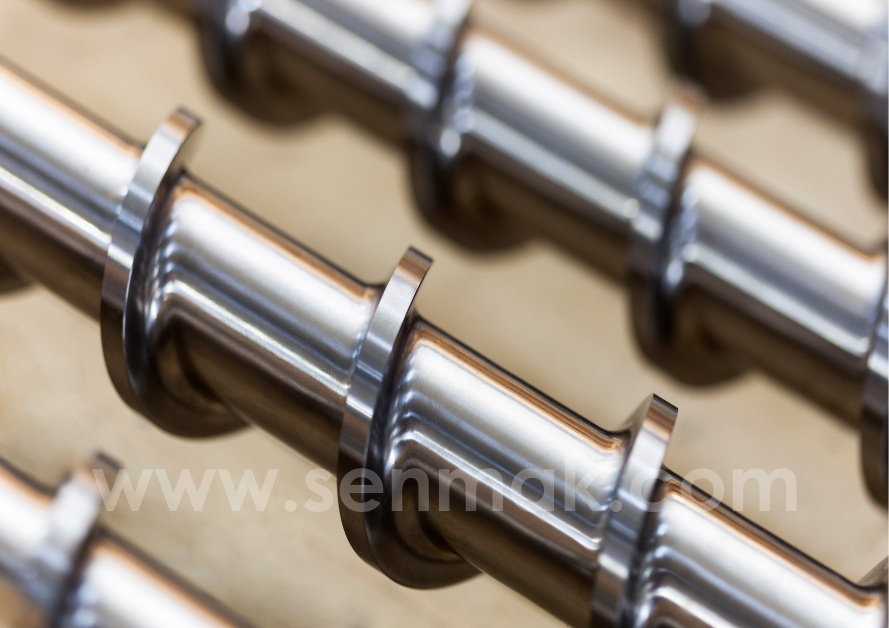- senmakadvert
- 2 min read
Screw and barrel systems are the most sensitive parts of plastic processing machines. For this reason, cleaning and maintenance is extremely important in order for the screw and barrel to work with the precision and efficiency of the first day.

Screw and barrel must be cleaned before periodical maintenance checks during raw material changes or during long-term stops and must be kept by coating with appropriate protective oils.
Screw and barrel can be mechanically or chemically washed. In the chemical cleaning of the screw and barrel, the screw and barrel are cleaned with the help of a cleaning agent fed into the screw barrel in the system operating under normal process conditions, without being removed from the system and separated from each other. When processing sensitive polymers, chemical cleaners should be used at every opportunity, and there should be no degraded burnt polymer in the places where the polymer comes into contact and passes.
If the mechanical cleaning of the screw and barrel are; It is applied while the screw and barrel are on the machine -by feeding a different raw material-with a suitable solid cleaning compound or by removing them from the machine and separating them from each other. As much as possible, raw materials should not be left on the screw and barrel during short or long-term stops. If possible, the raw material in the hive should not be emptied immediately, even during short stops while polymers such as PET, PA, OC, PVC are working.
The points to be considered in mechanical cleaning are as follows:
When removing the screw and barrel from the machine, the screw and barrel should be removed as much as possible without leaving any raw materials in the machine.
Immediately after disassembly on the machine -if possible while the screw and barrel are hot- the screw and barrel should be separated from each other.
Screw barrel that are separated from each other should never be placed on metal or hard ground. Wooden or plastic floor should be preferred.
The screw should not be cleaned with hard objects such as a file. Brass should be cleaned with a brush, bronze brush, spatula, copper felt or cloth. No dust should be left on the screws.
Dirt and rust on the screw barrel that cannot be cleaned with simple methods should be cleaned by a specialist with polishing.
If there are burrs on the screw, only the burr area should be carefully softened with sandpaper and polished as much as possible.
It should not be forgotten that the screw and barrel should be as bright as possible and there should be no burrs, cracks and damaged surfaces on which the raw material can be attached.



















































